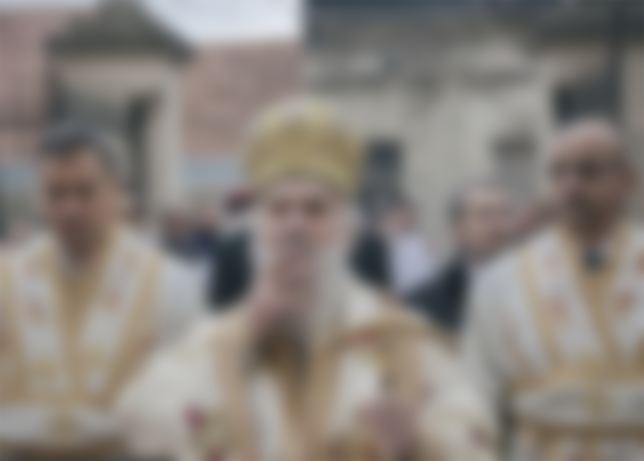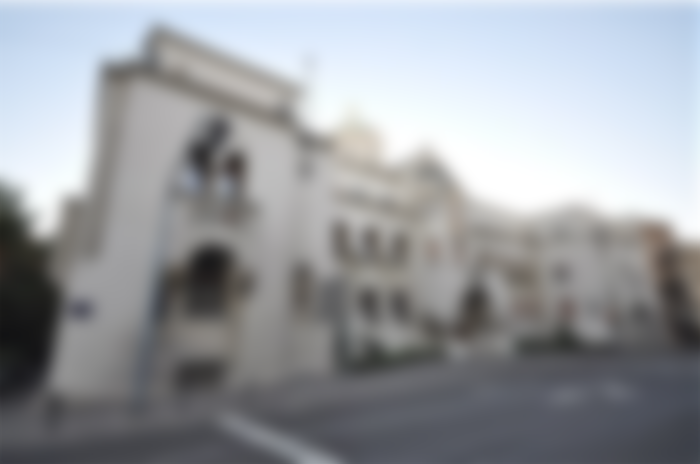Centuries-old guardians of Orthodox spirituality and Serbian culture, occasional leaders of migration, sometimes in sharp conflict with the state, and sometimes in unity with it, patriarchs of the Serbian Orthodox Church throughout history have often had roles that go beyond issues of faith.
"The role of the patriarch in Eastern Christianity was never only religious, but as a rule it was also political.
"And that is not specific to the Orthodox world, but every religious leader has an important political role.

After the death of Patriarch Irinej Gavrilovic on November 20, 2020 as a result of the corona virus, the highest officials of the Serbian Orthodox Church elected his successor at a session of the Holy Synod of Bishops in Belgrade, Porfirije Peric, Metropolitan of Zagreb and Ljubljana. one of the biggest candidates for the head of the Serbian Orthodox Church.

The Constitution of the Serbian Orthodox Church (SOC) stipulates that the patriarch must be elected three months after the death or withdrawal of the predecessor.
The Serbian patriarch is at the head of the Holy Synod of Bishops, which is a kind of government in the Serbian Orthodox Church.
He also chairs the Holy Synod of Bishops, which represents the legislative and supreme authority within the Serbian Orthodox Church.
The constitution stipulates that a patriarch can be any bishop who leads the diocese for "at least five years."

The election of the patriarch of the Serbian Orthodox Church is an event of crucial importance for the faithful, who thus get the head of the community "first among equals" who will lead the church in the years to come. However, however sacred this function may be, the choice itself is far more secular.
The patriarch of the Serbian Orthodox Church is elected by bishops by secret ballot. In this way, three candidates with a majority are obtained, whose names are then placed in sealed envelopes, and then one name is drawn.
This seemingly simple procedure is actually the result of a long tradition, history, but often also politics and compromise.
Here's how it came about:
The title is seven centuries old

The title of the first patriarch of the independent Serbian church is nominally held by Joanikija II. He was probably elevated to that title by King Dušan in 1346, so that Joanikije could then proclaim him emperor (because only a church dignitary in the rank of patriarch could do that). However, it is not very clear what the full title of Ioannicius II was. In the preface to Dušan's Code, he is called "the Most Reverend Patriarch Cyrus Ioannicius". The first title may have been “Patriarch to Serbs - Serbian (Serb).” With the expansion of the Serbian state to Greek areas, the title was extended and Joanikije was named “Patriarch of Serbs and Greeks”. After the unification of the regional Serbian churches in 1920, there were several official versions of the title of Serbian patriarch. The first was the Serbian Patriarch of the Orthodox Church of the Kingdom of Serbs, Croats and Slovenes, but the Patriarch of the renewed Serbian Patriarchate, the Archbishop of Peja and Karlovac and the Metropolitan of Belgrade, the Serbian Patriarch, the Archbishop of Peja and the Metropolitan of Belgrade and Karlovac are also mentioned. Pecki, Metropolitan of Belgrade and Karlovac and Patriarch of Serbia. From the time of Ioannicius II until today, there have been a total of 45 chiefs
Where is the patriarch elected?

The place of election of the patriarch has changed over the years. From 1338 to 1463, the election took place in the Patriarchate of Peja. With the invasion of the Turks, the seat of the church moved more and more to the north, so the Patriarchate was moved to Žiča, where it was until 1557, when Peć was renovated. The Patriarchate of Peja was abolished again in 1766. For a time, the Serbian Orthodox Church had its seat in Sremski Karlovci as a metropolitanate, then as a patriarchate. Since 1920, after the unification of several metropolitans into a patriarchate, which is considered the renewal of the Serbian Orthodox Church, the election of a patriarch has been done in Belgrade, and since 1935, when the current building on Kosančićev venac was erected on that place. This year's election of the patriarch in the crypt of the Temple of Saint Sava in Vracar is an absolute precedent in that sense.
How was the patriarch once elected?
In the recent history of the Serbian church, there were three ways of electing a patriarch - by royal decree, the vote of the majority and the apostolic lot (as it is today). In the Kingdom of SCS and Yugoslavia, the Electoral Assembly elected three candidates by secret ballot from among the archbishops, and then communicated them to the Minister of Justice in a written act. One of those three was appointed patriarch by the king on the proposal of the Minister of Justice. This was not the only difference compared to today. The election council consisted not only of archbishops, but also of some other church dignitaries, and even people of secular professions. There were heads of ministries, ministers of the Orthodox faith, representatives of the State Council, the Court of Cassation, rectors of Orthodox seminaries, rectors of universities if they were of the Orthodox faith, representatives of priests and monastic associations. If more candidates received the same number of votes, then those who are older are considered elected candidates. If the chosen ones were equal in rank, it was seen which of them was more ordained. When the king appointed a patriarch by decree, the minister of justice announced it to the Holy Synod of Bishops.
Election of a patriarch in SFR Yugoslavia
The change of the political system brought the first big change in the election of the patriarch. According to the 1957 Constitution of the Serbian Orthodox Church, the patriarch was elected from among the archbishops who governed the dioceses for at least five years. The patriarch was elected by the Electoral Council by secret ballot between the three candidates proposed by the Holy Synod of Bishops. The votes were drawn from the ballot box and counted aloud, and the candidate who received the absolute majority of votes was elected patriarch. If that didn’t happen in the first round, the choice would come down to two. In case both candidates get the same number of votes during the shortlist, then the choice between these two was made by lot. In addition to the bishops, the Dean of the Orthodox Theological Faculty in Belgrade, rectors of Serbian Orthodox seminaries, president of the Main Association of Diocesan Priests' Associations, archbishops of Belgrade, Skopje, Cetinje, Zagreb, Sarajevo, Peja and Sremski Karlovci, abbots of the Zice monastery , Studenica, Decani, Pec Patriarchate, St. Naum, Milesev, St. Vasilije Ostroški, Krušedol and Krka, the headmaster of the monastic school, all members of the Patriarchal Board and all vice presidents of the diocesan councils.
How is a patriarch elected today?

The fact that people who are not bishops also sat in the Electoral Assembly and that it was considered that they could be influenced, primarily by the authorities (at that time the Communists), led to a change in the composition of the Electoral Assembly. That is why Patriarch Herman proposed, and the other bishops accepted that the patriarch be elected exclusively by the archbishops, and that was not the only change! Since 1967, the church constitution has prescribed that the election of the patriarch be carried out at a session of the Holy Synod of Bishops, which has 39 members. He is chosen from among the active diocesan hierarchs who have managed the diocese for at least five years by secret ballot. That is how three candidates with more than half of the votes are obtained. If this does not happen in the first round, the voting is repeated until it happens, and the number of repetitions is unlimited. Each round is preceded by a prayer of the invocation of the Holy Spirit, and the rule is that the patriarch is elected under the vaults of the temple, and so far it has happened within the patriarchal chapel of St. Simeon the Myrrh-bearer, which is connected to the hall where the Council sits. After the three candidates are chosen, the names are placed in special, sealed envelopes that are placed in the gospel that is taken to the altar of the temple. After the prayer of the call of the Holy Spirit for the choice to be according to God's will, the oldest monk present pulls out one of the three envelopes from the Gospel and hands it to the chairman of the Electoral Council, who opens it and announces the name of the new patriarch. The chairman is also obliged to open the other two envelopes in order for all participants in the Parliament to be convinced that the elections were regular. This way of choosing is unique in the Orthodox world and is called the "apostolic draw".

The next day by choice at the ceremonyat.At the Holy Hierarch's Liturgy in the Sabrona Church in Belgrade, the patriarch is enthroned. Subsequently, the same procedure should be carried out in the Patriarchate of Peja, because it is the ancient seat of Serbian patriarchs.






